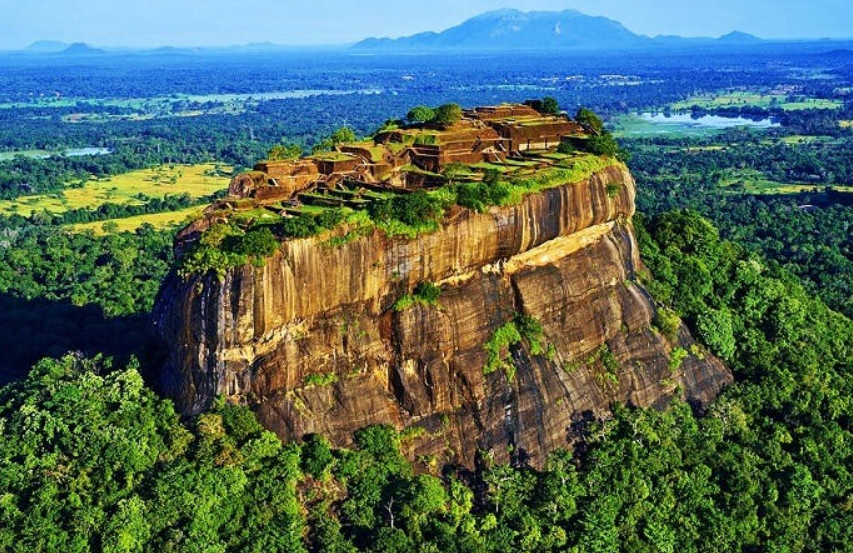Sri Lanka, an island nation rich in history, culture, and natural beauty, offers a treasure trove of experiences for travelers. From ancient ruins to vibrant festivals, this enchanting destination is home to many cultural gems. If you’re planning a trip, consider exploring some of these iconic places that reflect the heart and soul of Sri Lanka.
1. Sigiriya Rock Fortress
Sigiriya, often referred to as Lion Rock, is an ancient rock fortress that rises dramatically from the plains of central Sri Lanka. This UNESCO World Heritage Site, built in the 5th century, features remarkable frescoes and impressive water gardens. The climb to the summit is rewarding, offering breathtaking views of the surrounding landscape and a glimpse into the ingenuity of ancient Sri Lankan architecture. The site is not just a fortress but also a testament to the artistic achievements of the era, making it a must-visit for history enthusiasts. If you're planning a trip, consider a Delhi to Sri Lanka tour package to include this magnificent destination in your itinerary.
2. Anuradhapura
Anuradhapura was the first capital of Sri Lanka and remains one of the country's most important archaeological sites. Founded in the 4th century BC, it boasts a wealth of ancient temples, stupas, and monasteries. The sacred Bo Tree, a descendant of the tree under which Buddha attained enlightenment, is located here and attracts pilgrims from around the world. Walking through the sprawling ruins, visitors can appreciate the grandeur of ancient Sri Lankan civilization, showcasing intricate stone carvings and large stupas, like the Jetavanaramaya and Ruwanwelisaya.
3. Polonnaruwa
Polonnaruwa, another UNESCO World Heritage Site, was the capital of Sri Lanka during the 11th and 12th centuries. The city is renowned for its well-preserved ruins, including the Gal Vihara, where four impressive statues of the Buddha are carved into a rock face. The ancient gardens and ponds offer a glimpse into the sophisticated urban planning of the era. Visitors can explore the ruins by bicycle, making it a perfect way to appreciate the serene beauty and historical significance of this ancient city.
4. Kandy
Kandy, nestled in the lush hills of Sri Lanka, is famous for its sacred Temple of the Tooth, which houses a relic believed to be a tooth of the Buddha. This UNESCO World Heritage Site is a pilgrimage destination for Buddhists and an essential stop for travelers. The city also hosts the Esala Perahera, an annual festival that features a grand procession with traditional dancers, drummers, and decorated elephants. The vibrant atmosphere and spiritual significance of Kandy make it a cultural hub worth visiting.
5. Galle Fort
Galle Fort, a UNESCO World Heritage Site, reflects the colonial history of Sri Lanka with its well-preserved architecture and cobblestone streets. Originally built by the Portuguese and later fortified by the Dutch, the fort offers a blend of European and South Asian influences. Visitors can stroll along the ramparts, explore quaint shops and cafes, and admire the stunning views of the Indian Ocean. The fort's museums and historic buildings tell the story of Galle's maritime heritage, making it a fascinating stop for history buffs.
6. Dambulla Cave Temple
The Dambulla Cave Temple, another UNESCO World Heritage Site, is a complex of five caves filled with stunning Buddhist art and statues. Dating back to the 1st century BC, the caves feature over 150 statues of the Buddha and vibrant frescoes that depict various Buddhist teachings. The sheer scale of the art and the serene atmosphere of the caves create a spiritual experience for visitors. Climbing to the temple requires some effort, but the panoramic views and artistic treasures waiting at the top make it worthwhile.
7. Nuwara Eliya
Known as “Little England,” Nuwara Eliya is famous for its cool climate, lush tea plantations, and charming colonial architecture. This hill station is a refreshing escape from the tropical heat and offers stunning landscapes characterized by rolling hills and cascading waterfalls. Visitors can explore the tea estates, learn about the tea-making process, and sample some of the finest Ceylon tea. The town's beautiful parks, such as Victoria Park, and the picturesque Gregory Lake provide perfect spots for relaxation and enjoying nature.
8. Adam’s Peak (Sri Pada)
Adam’s Peak, or Sri Pada, is a sacred mountain known for its stunning sunrise views and a prominent footprint-shaped rock at its summit, believed to be the footprint of Buddha by Buddhists, Shiva by Hindus, and of Adam by Christians and Muslims. The pilgrimage to the peak is a significant spiritual journey for many, particularly during the climbing season from December to May. The trek can be challenging, but reaching the summit in time for sunrise rewards hikers with breathtaking views and a profound sense of accomplishment.
9. Jaffna Peninsula
The Jaffna Peninsula, located in the northern part of Sri Lanka, offers a unique cultural experience distinct from the rest of the island. This area is rich in Tamil heritage, evident in its temples, festivals, and cuisine. Visitors can explore ancient Hindu temples, sample traditional Jaffna dishes, and learn about the region's history. The vibrant culture, characterized by its music and dance, provides an authentic glimpse into the lives of the local people. The beauty of the northern beaches and the historical significance of the Jaffna Fort add to the appeal of this often-overlooked destination.
10. Colombo
As the capital city, Colombo is a vibrant metropolis that blends modernity with tradition. The city is home to numerous museums, galleries, and historical sites, including the National Museum of Colombo, which showcases the country’s rich heritage. Visitors can stroll through the bustling streets of Pettah, indulge in local street food, and explore the waterfront promenade of Galle Face Green. The city's diverse culture is reflected in its architecture, cuisine, and lively atmosphere, making it a fitting introduction to the wonders of Sri Lanka.





Comments